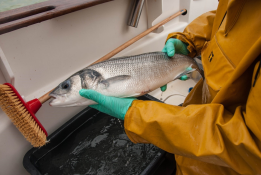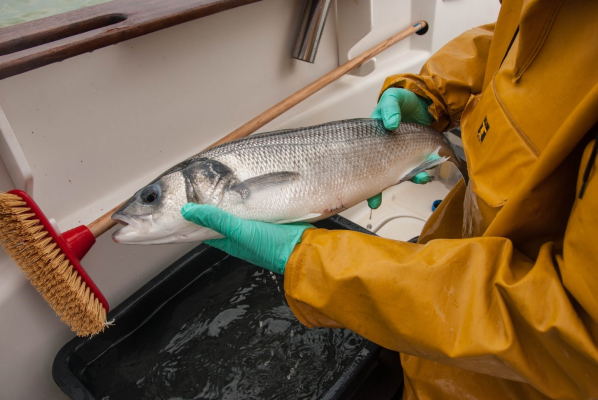The pursuit of seabass and its conservation: electronic tagging
Little is known on the movements of European seabass in the (Belgian Part of the) North Sea. Yet, knowledge of these spatial dynamics are crucial for the management and conservation of the jeopardized stock.

In a collaboration between VLIZ, ILVO and Ghent University, European seabass are tracked with Acoustic Data Storage Tags. These electronic tags function both as acoustic transmitters and as data loggers. The acoustic signal is detected by receivers of the Belgian LifeWatch network whenever the tagged seabass is in the vicinity. On the other hand, depth and temperature measurements are continuously stored on the tag itself, making recovery of the tag necessary to access the data. This tagging data allows to reconstruct migration trajectories and understand how seabass use different habitats over time.
EOS magazine followed biologist Jolien Goossens for one day in Zeebrugge and documented her seabass research in an online report. You can read the full EOS article "Hengelen om vissenlevens te redden" (in Dutch) on the link below.

EOS magazine followed biologist Jolien Goossens for one day in Zeebrugge and documented her seabass research in an online report. You can read the full EOS article "Hengelen om vissenlevens te redden" (in Dutch) on the link below.




